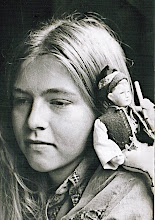Monday, March 14, 2011
Sunday, March 13, 2011
Streetcar Sunday - Lyon, France
It's often difficult to see the overhead lines of electric streetcars on old postcards. In some cases they just don't show up clearly, and in other cases they were purposely obscured by the person tinting or re-touching the card. There are overhead wires on both of these card; they're just very hard to see. I looked closely because I had heard that Lyon had steam-powered trams at one point, and I had remote hopes that one of these would be a steam-powered tram. For, whatever reason, I find steam-powered trams of great interest. They were generally underpowered, so they lost out to the electric-powered trams, but there is something very romantic about them.

In 1879, electric trams were introduced in Lyon. By 1894, there were ten lines, and after that expansion continued until 1914. In the 1930s there was a shift to trolleybuses, and by 1957 the trams had been abandoned all together. If you've been reading previous Streetcar Sunday posts, you can probably predict what comes next. In 2001 the City of Lyon re-introduced trams to complement the metro system. Lyon now has four tram lines and 73 articulated cars. There is also a Rhônexpress line which links Part-Dieu Villette to Saint-Exupéry airport.

Here are the backs of the cards in the same order.
Is the recipient's surname Condom?

In 1879, electric trams were introduced in Lyon. By 1894, there were ten lines, and after that expansion continued until 1914. In the 1930s there was a shift to trolleybuses, and by 1957 the trams had been abandoned all together. If you've been reading previous Streetcar Sunday posts, you can probably predict what comes next. In 2001 the City of Lyon re-introduced trams to complement the metro system. Lyon now has four tram lines and 73 articulated cars. There is also a Rhônexpress line which links Part-Dieu Villette to Saint-Exupéry airport.

Here are the backs of the cards in the same order.
Is the recipient's surname Condom?
Friday, March 11, 2011
San Francisco Earthquake
Today if we turn on the television or read the news on the internet, we'll see up-to-date information on the terrible destruction of the earthquake in Japan. In 1906 the earthquake that struck San Francisco registered approximately 7.9 on the Richter scale, much less than the recent earthquake in Japan. Yet it left the city in ruins, as much from the ensuing fire as from the earthquake itself. An estimated 3,000 people were killed and nearly two thirds of the city's residents were left homeless. Instead of the internet and television, the destruction of this earthquake was documented in newspapers and with postcards.
Although these photos and many other postcard photos of the San Francisco earthquake were very dark and grainy, the National Museum of American History recently uncovered some real color photos from the aftermath of the earthquake. They look a bit like Polaroids from the 1970s. Pretty amazing. For pictures of many different colors, put on a hard hat and make your way over to Sepia Saturday.
 |
| Wait a minute...is that dog lifting its leg? |
Although these photos and many other postcard photos of the San Francisco earthquake were very dark and grainy, the National Museum of American History recently uncovered some real color photos from the aftermath of the earthquake. They look a bit like Polaroids from the 1970s. Pretty amazing. For pictures of many different colors, put on a hard hat and make your way over to Sepia Saturday.
Subscribe to:
Comments (Atom)















.jpg)






